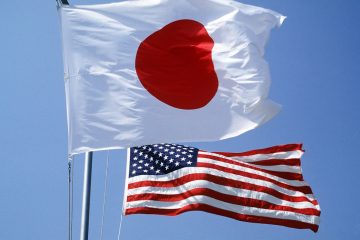Asia’s manufacturing signals growth

Manufacturing indicators across Asia suggest an uptick in activity; however, the overall outlook continues to be uncertain. Data on factory activity in Asia revealed a general increase in growth momentum as the first quarter progressed, although it also highlighted certain vulnerabilities amid rising global trade tensions. S&P Global reported that the headline manufacturing purchasing managers index for Asean increased to 51.5 in February, marking the highest level in more than six months, up from 50.4 in January.
Erica Tay, an economist at Maybank, noted that the extent to which the increase in new orders throughout Asia can be attributed to front-loading in anticipation of potentially more stringent U.S. trade policies remains uncertain. Should that transpire, purchasers might retreat, potentially leading to a degree of softness in the latter half of the year, she noted. The PMI data indicated a more rapid expansion in output for the region, alongside robust growth in underlying demand. Manufacturers in Asean have reported a surge in confidence, reaching levels not seen in nearly two years, as inflationary pressures seem to be under control, according to S&P.
In Indonesia, the survey’s primary indicator reached an 11-month peak, whereas Thailand has rebounded into expansion territory after experiencing a contraction in January. Thailand’s output experienced its most rapid growth in six months, with new orders and employment showing signs of stabilization, according to S&P data. According to Tay from Maybank, production capacity in Southeast Asia is increasing to meet the robust demand emanating from China and various economies within the region.
Semiconductor manufacturing giant Taiwan’s print indicated a marginally accelerated pace of growth, suggesting an optimistic short-term forecast, according to Joe Hayes, principal economist at S&P Global Market Intelligence. The increase in new factory orders and sales seems to be propelled by a combination of domestic and international demand, notably from Europe and the United States, Hayes noted.
The outlook appears less favorable for other significant U.S. regional trading partners, Japan and Vietnam, as their PMI readings persist in contraction, reflecting ongoing declines in new orders and output. Japan experienced its eighth consecutive month of declining operating conditions; however, the February reading of 49.0, up from 48.7 in January, suggested a milder contraction within the manufacturing sector, according to S&P Global Market Intelligence economist Usamah Bhatti.
Japanese manufacturers have indicated ongoing weakness in both domestic and global manufacturing demand, with firm confidence declining to its lowest level since mid-2020, according to Bhatti. “The immediate prospects appear uncertain,” Bhatti remarked, noting that “companies pointed to the possible negative implications of U.S. protectionist trade measures and a recovery that may unfold more sluggishly than expected.”
Vietnam, the country with which the U.S. holds the second-largest trade deficit among Asian nations, trailing only China, experienced a modest sequential uptick in its PMI reading. Manufacturers have observed persistent weak demand in both domestic and international markets, coupled with subdued export activity, according to S&P. Transportation challenges, encompassing the velocity and accessibility of freight alongside rising expenses, posed significant obstacles for the Vietnamese manufacturing sector throughout the month, remarked Andrew Harker, economics director at S&P Global Market Intelligence. Firms expressed a positive outlook regarding the future, contingent upon the stabilization of economic conditions and a potential easing of supply-side constraints, Harker noted.
India’s sales and output growth rates have declined to their lowest levels in 14 months; however, the PMI data continues to indicate expansion, as reported by S&P. The emphasis will continue to be on global tariff trends and their consequential effects on manufacturers and economies across Asia.
“The uncertainty driven by trade dynamics and the accompanying volatility are poised to escalate rather than diminish sustainably, until negotiated compromises effectively mitigate further risks in the longer term,” stated Vishnu Varathan, head of macro research for Asia excluding Japan at Mizuho Securities, in a note. According to a report by Morgan Stanley’s Asia economists, China, South Korea, India, Taiwan, and Vietnam are particularly vulnerable in Asia to the potential imposition of reciprocal tariffs by the United States, which may be implemented as early as April. The Trump administration has introduced several tariffs, with the possibility of additional measures on the horizon. Such developments could undermine corporate confidence and subsequently exert pressure on economies, according to analysts.










